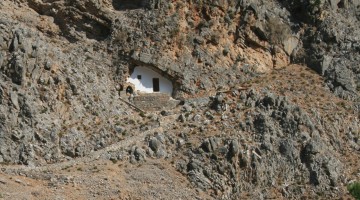All one has to do is a simple Google search to discover the many benefits of slow, rhythmic breathing. Often, people tend to associate such insights more with Yoga and Far Eastern religions than with Christianity. However, there is a tradition within Christianity of praying with the breath. The main sector of Christendom that would promote such a practice would be within the monasticism of the Orthodox and Eastern Rites. Works such as the Philokalia highlight a movement within Eastern Monastacism called Hesychasm that developed out of the spirituality of the Desert Fathers. They would develop a theology of prayer that centered around the recitation of the Jesus Prayer, connecting it with the breath and specific postures.
Although not as widely encouraged or studied in the Latin West, such practices do appear from time to time. The most prominent example would be in the Spiritual Exercises of St. Ignatius of Loyola under the third method of prayer (http://sacred-texts.com/chr/seil/seil38.htm). This method seems to appear in the exercises with little explanation, and I have never heard of it being integrated into an Ignatian Retreat. However, it is there nonetheless.
I would integrate these different streams of thought and propose that Christians can use such insights in the following way. To begin with, we must recognize that this is a “way of relating to the Lord.” By this I mean that the foundation for prayer is always an interpersonal relationship with the Most Holy Trinity. If you look under the section of this website called the “Ways of Relating to the Lord,” you will find a section that deals with acquired contemplation. I would argue that praying with the breath is a way of practicing acquired contemplation.
To do so, one can approach it in a variety of ways. One can use the Our Father or Hail Mary as St. Ignatius suggests, or one can use a phrase of scripture. A beautiful example of this can be found in a previous article called “Just A Few Words” (http://www.contemplatio.us/just-a-few-words/). Although that friend of mine did not integrate the breath into her practice, it would not take much to do so. To do so, you would simply say part of the passage of scripture on the inhale (or think it), and say the second part on the exhale. You can also use a personal phrase in such a practice such as “Jesus, I love you.”
Also, one need not feel constrained by the use of language. A contemplative nun who is a friend described how the breath can become a symbol of prayer. On the inhale, one can rest in receiving everything from God, and on the exhale one can rest in giving everything to God. When discerning how to approach this, the key is to listen what helps bring you closer to our Lord. You will discover over time that your prayer will adapt to the different situations in which you find yourself.
I would add that praying with the breath is not necessarily for everyone. One does not have to do such practices (there is no compulsion here). However, this can help when we take time for prayer and we are particularly stressed or tired. What I have discovered is that at such times, the mind wants to let go of discursive reasoning for a while. Instead of thinking and introspection, praying with the breath helps us to let go of the stress we are experiencing and return to a recollected state.
I hope this proves helpful for others as well.












No Comment